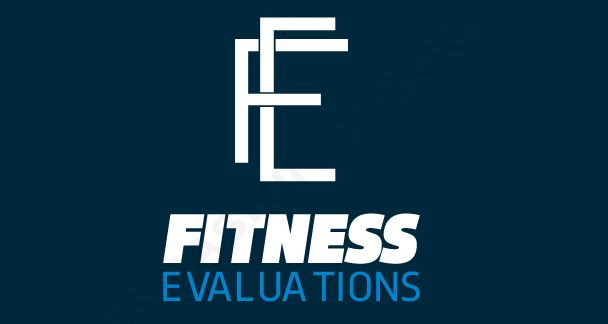الطريق إلى الصحة والمرونة
Introduction
In a world where the pace of life seems to be
Definition of Physical Fitness
Physical fitness encompasses a state of well-being that allows an individual to efficiently perform daily tasks, while maintaining sufficient energy for leisure activities. It is a holistic concept that includes cardiovascular endurance, muscular strength, flexibility, and body composition. Achieving and maintaining physical fitness is crucial for overall health and flexibility.
Benefits of Physical Fitness:
Improving Cardiovascular Health: Regular exercise enhances heart health, reducing the risk of cardiovascular diseases. Activities such as running, cycling, and swimming improve the heart and blood vessels’ endurance, ensuring a strong heart and efficient blood circulation.
Muscular Strength: Building and maintaining muscular strength is vital for functional physical fitness. Strong muscles support body posture, reduce the risk of injury, and contribute to overall physical strength.
Flexibility: Incorporating flexibility exercises such as stretching and yoga enhances joint mobility and prevents stiffness, crucial for achieving overall flexibility and improving movement in daily activities.
Mental Health Benefits: In addition to physical benefits, physical fitness positively impacts mental health. Exercise releases endorphins, reducing stress, improving mood, and enhancing sleep quality. Long-term engagement in physical fitness can also contribute to preventing mental health issues.
Long-Term Health Benefits: Regular physical activity acts as a powerful tool in preventing chronic diseases such as diabetes, high blood pressure, and obesity. It contributes to increased longevity and improved quality of life in later years.
Components of Physical Fitness:
Cardiovascular Endurance: This component focuses on activities that raise the heart rate for an extended period, such as running, cycling, and aerobic exercises. Cardiovascular endurance improves the efficiency of the heart and lungs.
Muscular Strength: Strength exercises, including resistance training such as weightlifting, contribute to developing and maintaining muscle strength, essential for overall body function.
Flexibility: Often neglected, flexibility is a crucial aspect of physical fitness. Stretching exercises, yoga, and Pilates enhance joint flexibility, prevent injuries, and improve overall movement.
Body Composition: Achieving a healthy balance between lean muscle mass and body fat is vital for optimal health. Balancing nutrition and exercise contributes to maintaining a healthy body composition.
Flexibility and Its Role in Physical Fitness:
Flexibility refers to the range of motion in a joint or group of joints. It is a fundamental aspect of physical fitness that is often overlooked until it becomes a limitation. Integrating flexibility exercises into your routine enhances joint mobility, reduces the risk of injury, and improves body posture. Simple and effective stretching and yoga postures can significantly improve flexibility. Regular practice of these activities can make a noticeable difference in your overall health.
Practical Tips and Exercises to Improve Flexibility:
Stretching Routine: Incorporate a daily stretching routine that targets major muscle groups. Hold each stretch for 15-30 seconds to allow for optimal muscle elongation.
Yoga and Pilates: Engage in yoga or Pilates classes to enhance flexibility and core strength. These disciplines focus on controlled movements that promote joint flexibility.
Dynamic Stretching: Before engaging in more intense activities, perform dynamic stretching. This includes controlled movements that mimic the activity you are about to engage in, preparing your muscles and joints.
Integrating Fitness into Daily Life:
The demands of a busy schedule often make it difficult to prioritize fitness. However, integrating physical activity into daily life is essential for long-term health. Here are some strategies to overcome common challenges and make fitness a consistent part of your routine:
Schedule Workouts: Treat your workouts as important appointments. Schedule them in advance and prioritize them just as you would any other commitment.
Short, Intense Workouts: High-intensity interval Training (HIIT) provides effective workouts in a short time. You can easily incorporate these intense bursts of activity followed by short rest periods into a busy schedule.
Active Commuting: Walking or cycling to work, using stairs, or choosing active transportation can incorporate exercise into your daily routine.
Consistency and Variety: Consistency is key, but variety keeps things interesting. Incorporate different types of workouts to prevent boredom and target different muscle groups.
Overcoming Fitness Barriers: Embarking on a fitness journey can be challenging, and various obstacles may hinder progress. Let’s address common barriers and provide practical solutions to ensure a smooth transition to a healthier lifestyle:
Lack of Motivation: Find a workout buddy, set achievable goals, or reward yourself for accomplishments. Motivation often comes from seeing progress and feeling the positive effects of exercise.
Time Constraints: Prioritize short, intense exercises or break longer sessions into smaller manageable parts throughout the day. Remember that consistency is more important than the duration of each session.
Physical Limitations: Consult a healthcare professional or fitness expert to create a personalized exercise plan that accommodates any physical limitations or health concerns you may have.
Safety and Injury Prevention: Ensuring safety during fitness activities is crucial for long-term health. Follow these guidelines to reduce the risk of injuries:
Proper Form: Learn and practice the correct form for each exercise. Incorrect form can lead to injuries and compromise the effectiveness of the exercise.
Gradual Progression: Increase the intensity and duration of your workouts gradually to allow your body to adapt and reduce the risk of overuse injuries.
Warm-Up and Cool Down: Always warm up before engaging in intense activities to prepare your muscles and joints. Similarly, cool down afterward to aid recovery and prevent stiffness.
Listen to Your Body: Pay attention to any signs of discomfort or pain. Pushing through pain can lead to injuries. If something doesn’t feel right, consult a professional.
Adapting Fitness to Individual Needs: Recognizing that everyone is unique, fitness regimens should be tailored to individual goals, abilities, and preferences. Consider the following factors when customizing your fitness plan:
Personal Goals: Identify your fitness goals, whether they involve weight loss, muscle building, improving endurance, or overall health.
Fitness Level: Start at a level that suits your current physical abilities. Progress gradually to more challenging exercises as your strength and endurance improve.
Preferences: Choose activities that you enjoy to make your fitness routine sustainable. Whether it’s running, swimming, dancing, or long walks, find what brings you joy.
Consultation with Professionals: If in doubt, consult a healthcare professional or certified fitness trainer. They can provide personalized guidance based on your health status and goals.
In conclusion, fitness is a comprehensive approach to health, encompassing physical and mental well-being. By understanding the components of fitness, emphasizing flexibility, and addressing common barriers, anyone can embark on a journey toward improved health and resilience. It’s not about perfection but consistency and progress. Take proactive steps to integrate fitness into your daily life, and witness the transformative impact on your overall health. Embrace the path to health and resilience, empowering yourself to live a vibrant and fulfilling life.
Lorem ipsum dolor sit amet, consectetur adipiscing elit. Ut elit tellus, luctus nec ullamcorper mattis, pulvinar dapibus leo.
Lorem ipsum dolor sit amet, consectetur adipiscing elit. Ut elit tellus, luctus nec ullamcorper mattis, pulvinar dapibus leo.

